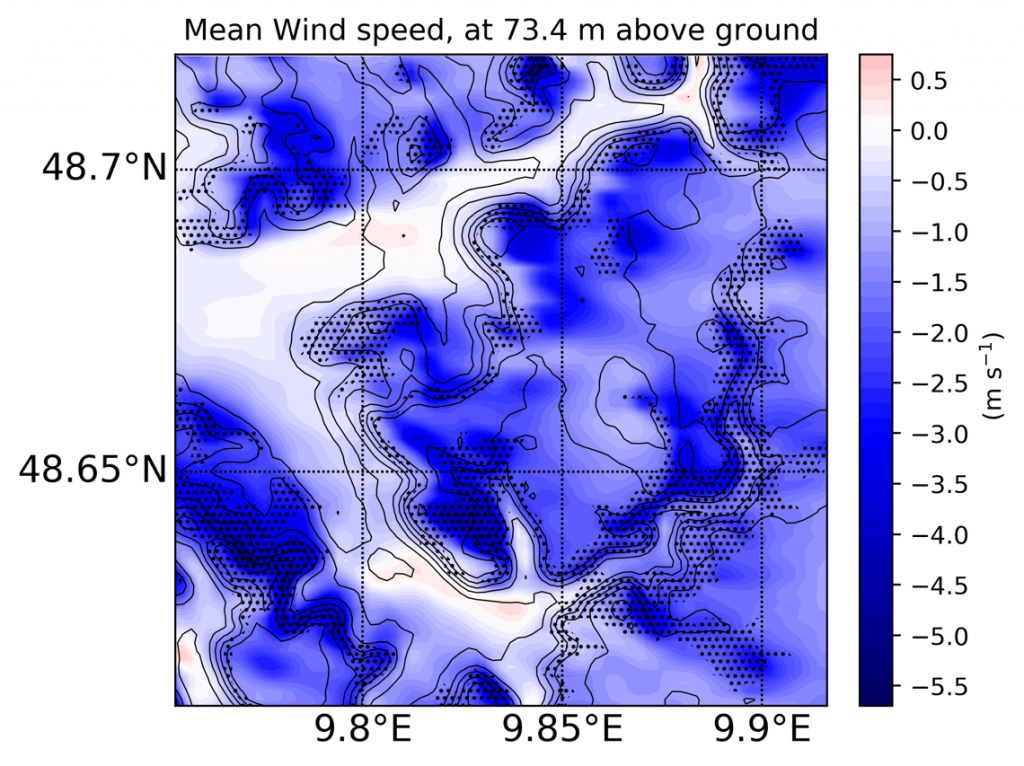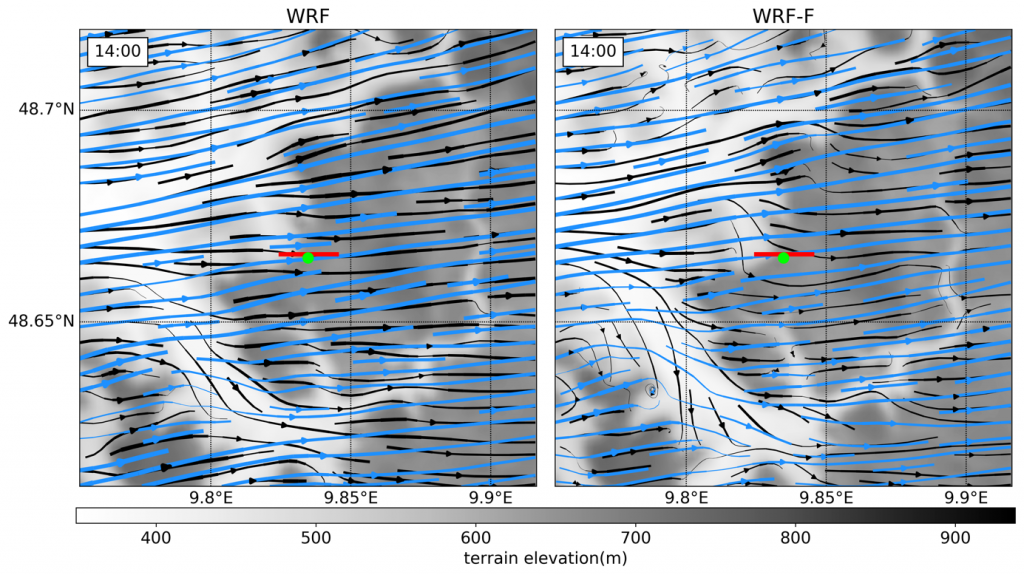WindForS was founded to investigate the effect of complex, hilly terrain on wind energy.
In this update, Dr. Daniel Leukauf from the KIT Institute of Meteorology and Climate Research – Atmospheric Environmental Research (IMK-IFU) shares results from the WINSENT project to develop a wind energy test facility.
Slopes in mountainous and hilly terrain are often forested since the steep terrain does not allow for farming. Thus, forests are rather common in complex terrain and the distribution of the forests is often very irregular. For wind power applications, one has to consider the impact of the trees on the flow, as well as the turbulence resulting from the shear.
Existing wind and weather models don’t always do a good job of capturing the effect of trees. One of the most commonly used models is the Weather research and Forecasting model, WRF. In this project, we’ve implemented a forest drag parameterization (Shaw and Schumann, 1992).
Including the effect of the trees makes a difference on our results. Figure 1 shows the difference of the 48 hour averaged wind speed between a simulation with and without forest drag parameterization. During this period, a cold front passed over the test-site leading to wind speeds up to 14 m/s at 100 m above ground. The additional drag caused by the forest leads to average winds reduced by about 3 m/s. The impact varies however strongly in space and there are even a few spots where the wind speed increased slightly.

The forest parameterization affects not only wind speed, but also wind direction. Figure 2 shows stream lines at 58.5 m (black) and 187 m (blue) above ground, for a certain point in time. The flow in the valley to the to the north west of the test-site (green dot) changes direction by about 80°. High resolution CFD models must include the impact of forests as well. These results were published recently in Leukauf et al. (2019).

References
Leukauf, Daniel, Asmae El-Bahlouli, Kjell zum Berge, Martin Schön, Hermann Knaus, and Jens Bange. 2019. “The Impact of a Forest Parametrization on Coupled WRF-CFD Simulations during the Passage of a Cold Front over the WINSENT Test-Site.” Wind Energy Science Discussions, September, 1–24. DOI: 10.5194/wes-2019-68.
Shaw, Roger H., and Ulrich Schumann. 1992. “Large-Eddy Simulation of Turbulent Flow above and within a Forest.” Boundary-Layer Meteorology 61 (1): 47–64. DOI: 10.1007/BF02033994.
Contact

Find out more
The WINSENT wind energy research test site is in development. If you’d like to know more, please contact Andreas Rettenmeier.
To find out more about working with WindForS, please contact Dr. Andrew Clifton, the WindForS Director.

